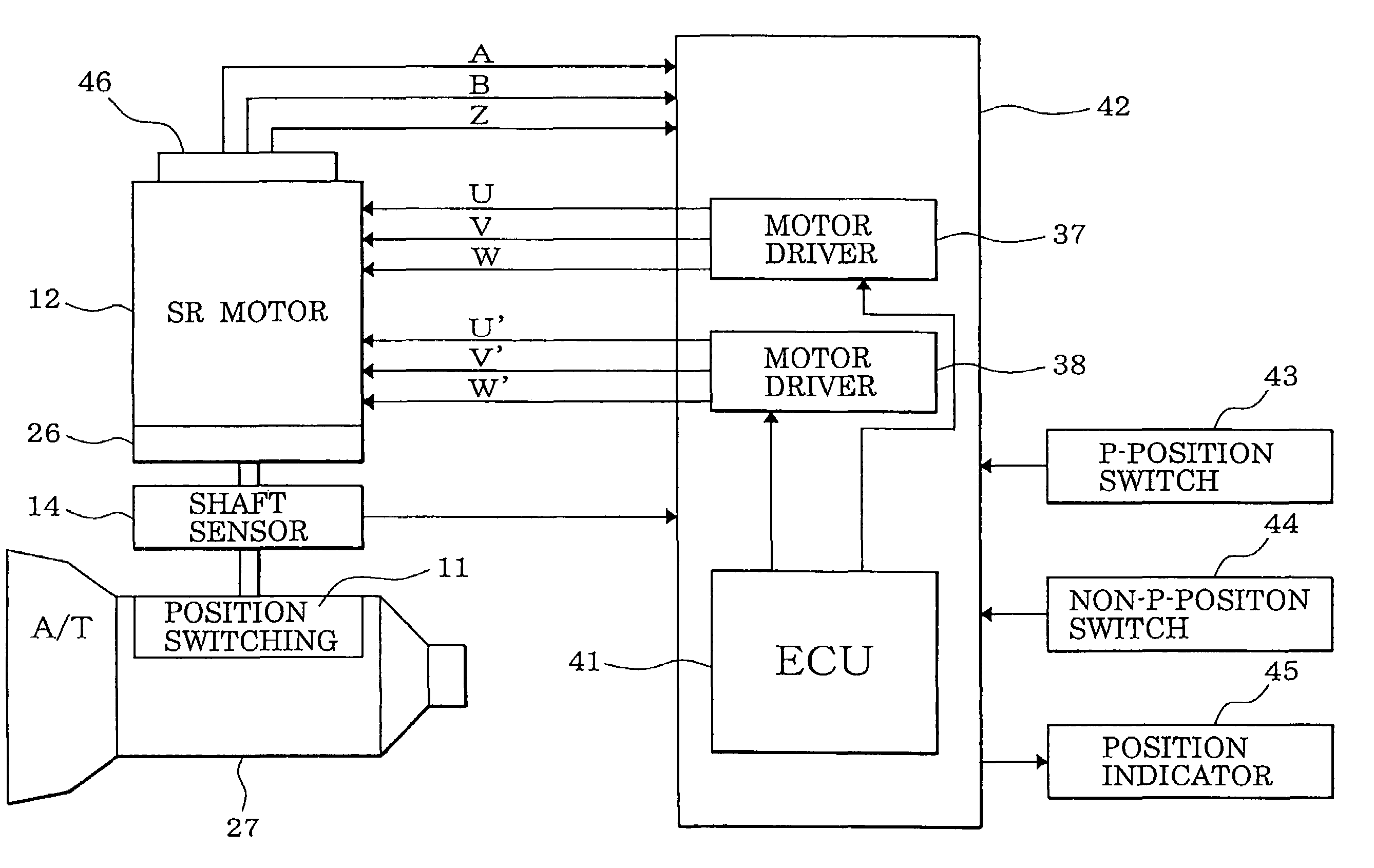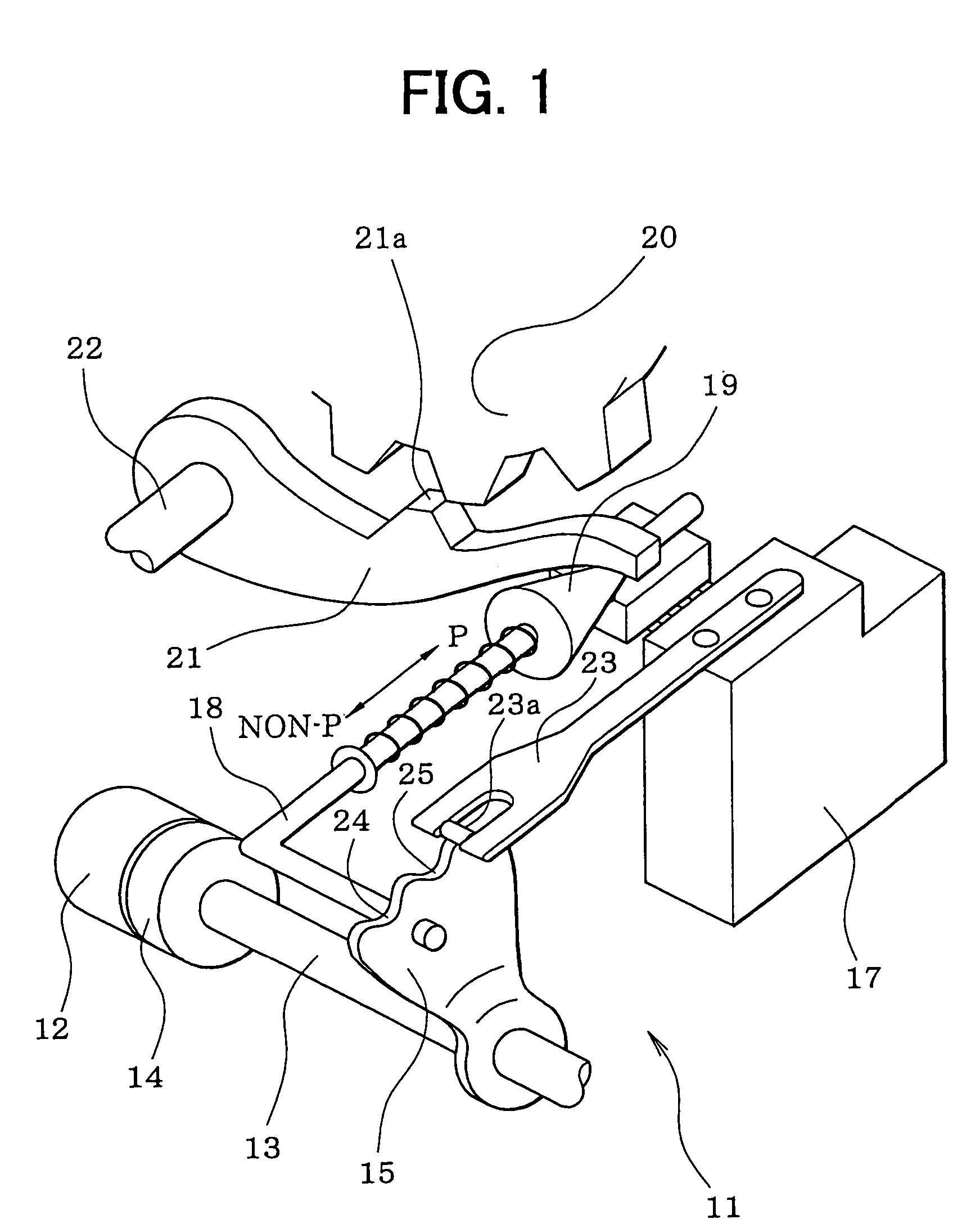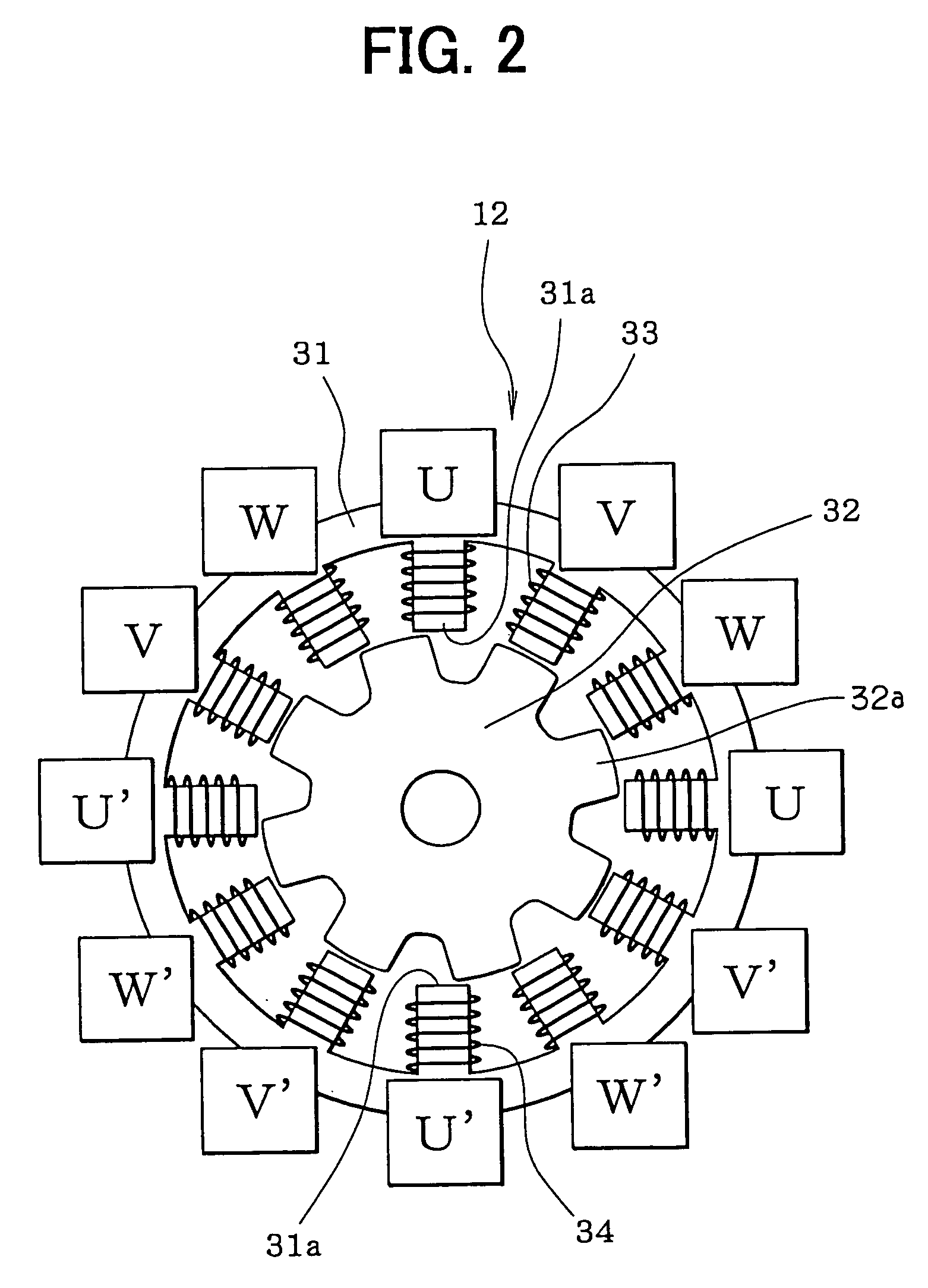Motor control apparatus operable in fail-safe mode
- Summary
- Abstract
- Description
- Claims
- Application Information
AI Technical Summary
Benefits of technology
Problems solved by technology
Method used
Image
Examples
first embodiment
[0055](First Embodiment)
[0056]A first embodiment in which the present invention is applied to a position switching device of an automatic transmission of a vehicle will be described with reference to FIGS. 1–48.
[0057]Referring first to FIG. 1, a position switching mechanism 11 is indicated with numeral 11. A motor 12 as a drive source of the position switching mechanism 11 is a switched reluctance motor, for example, incorporates a speed-reducing mechanism 26 (FIG. 4), and is equipped with an output shaft sensor 14 for detecting a rotation position of an output shaft 13 of the speed-reducing mechanism 26. A detent lever 15 is fixed to the output shaft 13.
[0058]An L-shaped parking rod 18 is fixed to the detent lever 15. A conical body 19 that is provided at the tip of the parking rod 18 is in contact with a lock lever 21. The lock lever 21 is moved in the vertical direction in accordance with the position of the conical body 19 and thereby locks or unlocks a parking gear 20. The park...
second embodiment
[0191](Second Embodiment)
[0192]In a second embodiment, if a disconnection is detected in the windings of one phase when a feedback control is started, the first current supply phase is set to one of the other two phases in which no disconnection is detected. More specifically, a phase that follows the disconnection-detected phase (hereinafter referred to as “disconnection phase”) in the order of current supply phase switching is set as the first current supply phase. This measure maximizes the number of times of current supply phase switching (i.e., the number of times of energization) that is performed until the disconnection-detected phase is selected as a current supply phase after a feedback control being started. Therefore, the rotation speed of the rotor 32 and hence its inertia is increased sufficiently by a time when the disconnection-detected phase will be selected as a current supply phase, whereby the feedback control can be performed reliably.
[0193]Further, in this embod...
third embodiment
[0249](Third Embodiment)
[0250]In the second embodiment, whether a disconnection exists in the windings 33 of each phase is determined by detecting a voltage level of the current supply line of each phase (i.e., a voltage level of the connecting point of the two resistors 61 and 62 of the disconnection detection circuit 60 of each phase). In contrast, in a third embodiment shown in FIGS. 43 and 44, whether a disconnection exists in the windings 33 of each phase is determined by detecting, with a current sensor 63, an energization current flowing through the current supply line of each phase.
[0251]As shown in FIG. 43, the neutral point of the drive coil 35 is connected to the negative pole of the battery 40 and one end of the windings 33 of each phase is connected to the positive pole of the battery 40 via a corresponding switching element 39 of the motor driver 37. Current supply to the windings 33 of each phase is turned on or off by turning on or off the corresponding switching ele...
PUM
 Login to View More
Login to View More Abstract
Description
Claims
Application Information
 Login to View More
Login to View More - R&D
- Intellectual Property
- Life Sciences
- Materials
- Tech Scout
- Unparalleled Data Quality
- Higher Quality Content
- 60% Fewer Hallucinations
Browse by: Latest US Patents, China's latest patents, Technical Efficacy Thesaurus, Application Domain, Technology Topic, Popular Technical Reports.
© 2025 PatSnap. All rights reserved.Legal|Privacy policy|Modern Slavery Act Transparency Statement|Sitemap|About US| Contact US: help@patsnap.com



